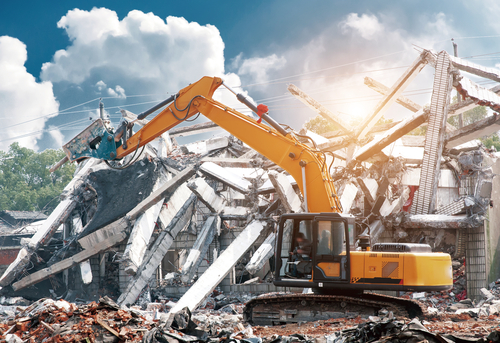General Hazardous Waste FAQs for Construction, Demolition, and Renovation
 |
Q: Which regulations—federal or state—apply to C&D debris containing hazardous wastes?
A: Hazardous wastes are regulated under the Resource Conservation and Recovery Act (RCRA), and most states are authorized to implement their own RCRA programs. These programs must be at least as stringent as the federal requirements but many are more stringent. Regarding what constitutes C&D debris (which typically includes things like lumber, concrete, cinder blocks, drywall, metal components like pipes and rebar, and doors and windows), some states exclude from their C&D debris definition materials that federal regulations allow, making the state rules more stringent.
For example, many states that exclude certain materials from their definition of C&D debris label them “hazardous,” “unacceptable,” “potentially toxic,” or just plain “illegal.” As a result, RCRA-authorized states may require that such materials be managed and disposed of in a manner consistent with federal and state requirements for hazardous wastes instead of with the solid waste requirements. When performing work in a RCRA-authorized state, always consult with state authorities before beginning work involving hazardous wastes.
Deliver fast and effective Environmental, DOT, and OSHA training with Environmental Training Library. Get it Now.
Q: What are some common C&D materials that may be considered hazardous wastes under federal and/or state law?
A: Typical C&D hazardous wastes may include:
- Waste paints, varnish, solvents, sealers, thinners, resins, roofing cement, adhesives, machinery lubricants, and caulk,
- Drums and containers that once contained the items listed above,
- Treated wood, including lumber, posts, ties, or decks, and utility poles,
- Lead-based paint, lead flashing or solder,
- Mercury-containing wastes (excluding those listed as Universal Wastes, such as batteries, thermostats, and lamps containing mercury), and
- Other items that have inseparable hazardous constituents.
Companies should also be aware of asbestos-containing materials (ACMs), such as certain older types of floor tile, insulation, or other materials containing asbestos, that are regulated under the Toxic Substances Control Act (TSCA).
Q: Do companies that conduct operations with only potentially small amounts of hazardous wastes in debris need to be concerned about RCRA hazardous waste regulations?
A: Any company that generates hazardous wastes is considered “potentially subject to RCRA.” The first responsibility is to identify the hazardous waste through testing or “knowledge of and familiarity with the waste.” Failure to do so properly or completely may result in civil and criminal penalties. Secondly, generators should determine their regulatory status based on the amount of hazardous waste generated:
- Large quantity generators (LQGs) generate 1,000 kilogram (kg) (about 2,220 lb) per month, or more than 1 kg (about 2.2 lb) of acutely hazardous waste per month.
- Small quantity generators (SQGs) generate more than 100 kg (about 220 lb) but less than 1,000 kg per month or up to 1 kg of acutely hazardous waste per month.
- Conditionally exempt small quantity generators (CESQGs) generate 100 kg or less per month and less than or equal to 1 kg of acutely hazardous waste per month.
According to the EPA, most construction, demolition, and renovation companies are considered CESQGs (due to the small amounts of hazardous waste generated from their construction projects), but check state regulations because some states have a different name and/or additional compliance standards for what would otherwise be the CESQG class of generator.
Train Better in 2014
Environmental Training Library combines an extensive library of prewritten environmental training materials developed by BLR’s experts. Get it Now.
Q: How is generator status determined for companies with fluctuating levels of C&D hazardous waste generation?
A: Under federal RCRA regulations, generator status is determined on a monthly basis. According to the EPA, some businesses that experience fluctuations choose to maintain the highest generator status achieved to simplify compliance.
Q: Are all RCRA hazardous waste generator categories required to obtain an EPA identification (ID) number?
A: Federal RCRA regulations require that LQGs and SQGs obtain an EPA ID number. However, some states also require CESQGs to obtain an EPA ID number. In most cases, generators request EPA ID numbers from the state implementing agency, which may use either the federal application form (EPA Form 8700-12) or their own state forms.
